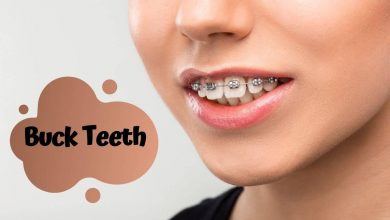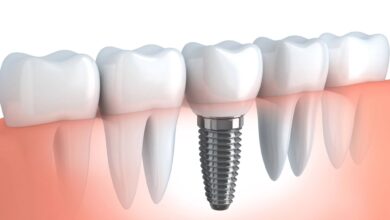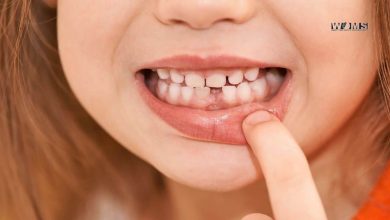The Discomforting TMJ Headache and Its Effective Remediation

Sometimes, you have those nagging pains in your head causing a lot of trouble. Your mind may not think about any jaw leading to this pain. However, we must tell you this interesting fact that sometimes the type of headache you have is actually ‘TMJ Headache’. Well, we hope you may be wondering about what is TMJ?
So, there are no worries as we have compiled this comprehensive blog on the TMJ headache. This blog post will reveal all the necessary details you want to explore about TMJ headache. Therefore, please keep reading to understand TMJ’ headaches in a more précised and better way.
The temporomandibular joint is also known by the name of TMJ is actually a hinge joint. This TMJ is essential for the connection between your jaw and your skull. Thanks to TMJ for allowing you to do different activities like talking, laughing, and chewing. Also, you are able to move your jaw in the up and down position due to TMJ. Also, it enables you to move your jaw from one side to the sideway. Are you thinking that TMJ is that essential for us then why are we associating headache with it? Let us throw some light on this for you. Here we go!
The Discomfort Due to Temporomandibular Joint (TMJ)
Before we could dive deeper into the details of TMJ headache, let us first brief you about TMJ. In simple words, it is because of the TMJ that you can open and close your mouth. By this, we mean that TMJ is a very active joint found in your body.
However, you may take it for granted and never observe how significant this joint is. Well, most of us do not have knowledge of the importance of the different muscles, joints, bones, and tendons of the jaws. In fact, they are working in very close coordination. So, if something goes wrong like having a TMJ headache then you should understand that something is wrong with this coordination.
Often you will see people complaining about TMJ headache having jaw clenching. Now, there is a strong association between TMJ headache and stress. There are people who would do jaw clenching and teeth grinding (bruxism) in an unconscious manner. They are found doing it day and night.
TMJ headache can be very discomforting. There are different kinds of TMJ pains. However, on a global scale, you will be amazed to hear that TMJ headache is the most upsetting one. Or you may say, it is actually the highest form of discomfort caused due to TMJ disorders.
Important Facts about Temporomandibular Joint (TMJ) Syndrome
As we said that TMJ is an essential joint allowing your different activities. However, it is also a source of great discomfort. So, what is the reason for such discomfort? We must tell you that there is any kind of injury or damage in the TMJ, the result is a pain disorder in a localized place. You can call it temporomandibular joint (TMJ) syndrome or temporomandibular disorder (TMD).
There can be different causal factors responsible for TMJ syndrome. For example, they include:
- Teeth or jaw injury
- Wrong alignment of the jaw or teeth
- Teeth grinding or jaw clenching
- Improper posture, gum chewing, arthritis, or stress
Now you may be wondering how to know if you have discomfort due to TMJ syndrome. Let us tell you some common signs and symptoms of TMJ syndrome. They are inclusive of the:
- Pain in your jaw
- Popping or clicking of your jaw
- Pain in one or both ears
- Having cracking sounds in the ears
- Nagging headaches
- Stiffness and soreness of the jaw muscles
- Pains in the temple region
- Jaw lock
However, there is nothing to worry about TMJ disorders because you can adopt simple home remedies to treat them. For example, you can avoid chewing any gums when you have pain. Or you may take nonsteroidal anti-inflammatory drugs (NSAIDs). You may do a gentler massage. Massaging your jaw and neck will ultimately cause a reduction in stress.
Sometimes, the home remedies won’t be functional. Then you must seek some genuine medical care. For example, you can opt for dental splints, surgical procedures, proper medication, Botox injections, and physical therapy, etc. With the help of Botox injections in the forehead, you can find a flawless and wrinkle-free forehead.
Though, TMJ syndrome or disorders can be very discomforting at times. However, you can manage them through self-care and by applying some verified home remedies
Temporomandibular Joint (TMJ) Over Migraines
TMJ headaches can be one of the most discomforting conditions of TMJ disorders. You must be wondering about the relevance of TMJ headache with migraines. Or you may also be thinking about how to distinguish TMJ headache from migraine.
TMJ headaches are actually tension headaches. You may differentiate between TMJ headache and migraine by a simple distinguishing factor. When you have a TMJ headache or tension headache, you will feel like having a baseball cap over your head. Also, that baseball size will be too small. In terms of location, you will feel a squeezing pain in different regions of your head e.g. frontal, sides, or in the rear side of the headache.
While migraine is a different experience. When you are undergoing a migraine, there are some chemical changes in the brain. There will be a sharp drop in the levels of serotonin when you are having an episode of the migraine. The trigeminal nerve is the primary nerve of the head and jaw. This nerve is related to the triggering of the pain.
Well, that’s not all about migraines for you to differentiate between a TMJ headache and migraine. In the case of migraines, you will observe that you have some additional sort of symptoms too. Such symptoms will be producing some precursors before a migraine and they are often referred to as a ‘visual aura’.
We hope now you will be able to spot if you have a TMJ headache or migraine.
The Nagging TMJ Headaches
Let us now brief you specifically about TMJ headaches. So, that you can understand TMJ headache in a comprehensive and easier way
Risk Factors of the TMJ Headaches
There can certain habits which give rise to TMJ headaches. You can simply prevent them and you will be able to overcome TMJ habits. Also, there can be different behaviors and factors which can lead you to TMJ headaches. We can enlist them as:
- Grinding of teeth
- Any sort of injury
- Any structural changes e.g. if you have any teeth missing. Or if there is the misalignment of any sort of dental implants or crowns etc.
- Emotionally driven risk factors e.g. stress, anxiety, or depression
- Any learned reaction to pain
- An overbite
- Having any sort of nutritional deficiencies e.g. deficiency of Ca, Mg, or Vitamin D
- Sensitivity to different kinds of the food items
- Excessive release of the estrogen hormone
- Pandemic
- Arthritis/inflammation
- Using computer very frequently
- Any sort of the infectious disease
- Any autoimmune diseases e.g. rheumatoid arthritis or psoriatic arthritis
If we related TMJ headache with the recent era’s risk factors then we can say holding your head in a strained position can lead to extreme discomfort. In fact, in the COVID-19 pandemic, many people have been complaining about developing TMJ. It can be related to stress and having a strained position of the head during work from home. You can understand it from this simple equation:
Emotional imbalance (anxiety, depression, or stress) + Increased Screen Use = ↑ risk for TMJ headache
TMJ Headaches Impacting the Global Population
TMJ headaches are not restricted to any nation. Rather, it is a global health issue. You will be astonished to learn that 1 out of 10 individuals is complaining about the development of TMJ headaches. This is the case in the United States. That simply means that half of the population is facing this issue.
Though, you cannot find any specific statistics which can be considered to estimate the exact population suffering from TMJ headache on a global scale. Another issue in this regard is that the estimation of the population suffering from TMJ headaches is that most people confuse TMJ headaches with migraines.
How do you Spot the Symptoms of TMJ Headaches?
The good thing about TMJ headache is that you can track it through some clear symptoms. Are you thinking about these symptoms? Let us tell you, they include:
- Tighter muscle of face and jaws
- Pain in the face and jaw
- Jaw having clicking noise
- Any restriction in the movement of the jaw
- Having any changes in the bite
The symptoms of TMJ headache are not restricted to the ones written above. There can be some other symptoms which lead you to TMJ headaches. We can simply enlist them as:
- Having jaw pain in different timings e.g. mornings or afternoon earlier hours
- Pain in different body parts especially back, eyes, neck, shoulders, or face
- Jaw locking
- Facing difficulty in opening your mouth
- Dizziness
- Problems in the fitting of the teeth
- Numbness in your fingers
Reducing TMJ Headaches in Stepwise Manner
Once it is confirmed that you have a TMJ headache, then comes the way of preventing or reducing it. We have compiled a three-step guide for you. You can adopt these three simpler steps to get rid of those nagging pains caused due to TMJ syndrome.
Though the treatment of the TMJ headache can be sometimes very complicated and mystifying. We are sure about the fact that if you have a TMJ headache at the moment, you would prefer to do something to relieve yourself like the days when you did not have any TMJ headaches. At the same time, you feel reluctant to go for the complicated therapies of TMJ headache relief. Or you may feel overwhelmed to go for treatment.
However, you should not lose faith because of the complexity of the treatment. The three-step guide is as follows:
Step I: Evaluation of the Cause of the Muscular Spasm and Pain
There are chances that you do not get relief from headaches even after you have seen a physician or neurologist. In that case, you must realize it’s time for consulting a TMJ specialist. The TMJ specialist will first do a proper evaluation of the complete head and neck. Then the doctor will be able to assess if you have headaches due to TMJ disorders shown by muscular pain. Or if this is a normal headache.
Step II: Stabilization of the Bite
If the bite is uneven then it ends in TMJ disorder ending in muscular tension ultimately. It is possible that your frontal is hitting greater than the back. Also, on some occasions, there can be one side hitting first in case of closing your mouth. As a result, you will feel fatigued due to muscular counterbalancing. As a result, you have chronic strain. Now you can balance this pain by trying the following three ways:
- Orthodontics
- Restorative dentistry
- Manual polishing of the important spots of the bite
Step III: Relieving the Muscular Pain
There is also a fair possibility that the muscular tension is reduced in a natural manner. In this way, the bite will be stabilized. However, if the problem persists then you can go for other treatment options like Botox. Botox of the masseter or temporalis muscles can help in this regard. Or you can also try jaw exercises and muscle relaxers etc.
Diagnosis Procedure of TMJ Headache by Health care Professional
In a typical diagnostic procedure, your TMJ specialist will be noting down your medical history. He will also perform a physical examination of the body for finding out the symptoms causing TMJ pain. However, we must tell you, so far no specialized tests are available for the diagnosis of the TMJ headache or other TMJ disorders.
After diagnosis, your TMJ doctor may refer you to an oral and maxillofacial specialist. Also, he can suggest you meet an ear, nose, and throat doctor or ENT specialist. What can be the other chance? He may ask you to get yourself a check-up from a dental specialist who deals in the disorders of the jaw. Only then will your diagnosis be complete.
Most of the patients with chronic TMJ headaches are advised to conduct an MRI of the temporomandibular joint. This is done for the detection of any damage caused in the cartilage of the jaw joint. After that, your medical specialist will be able to rule out the type of issue going on with you.
Also, your medical specialist will also diagnose you if you have a TMJ headache or is it trigeminal neuralgia. Because both of these medical ailments have almost similar symptoms. The function of the trigeminal nerve is the supply of the nerve impulses to your temporomandibular joint. If there is any cause of the irritation of the trigeminal nerve then you can feel pain in the face as a result.
For example, trigeminal neuralgia can result from swollen lymph nodes, dental braces, giant cell arteritis, ill-fitting dentures, salivary gland disease, and also a sore throat.
Management of the TMJ Headache & Other TMJ Disorders
We hope you have understood the risk factors, causes, and symptoms of the TMJ headache. Now we want to educate you about the possible managerial steps of the TMJ headache. Well, the management of the TMJ headache cannot be restricted to a single step. In fact, there are different ways through which you can manage it. The following section will make you understand these managerial practices adopted at a global scale to treat TMJ headaches specifically and TMJ disorders in a general sense.
Changing Your Lifestyle
If you are suffering from TMJ headaches in a very frequent manner then the first thing you need to do is to change yourself. Before consulting any doctor, it will be very beneficial to change some of the daily habits that you have. Though these changes will be very minute. However, the impact of these changes will be definitely noticeable. So without further waiting, let us share these lifestyle changes with you:
- You must avoid hardy and food that needs too much chewing
- You should adopt ways to reduce your stress. This step will help you in the prevention of stress management e.g. jaw clenching
- Another good way of lifestyle change is to avoid certain jaw movements. For example, you can avoid opening a wide mouth during yawning. And you should also do the same during gum chewing
- You may manage it in a personal capacity by using nonsteroidal anti-inflammatory medication (NSAIDs). They will ultimately cause a reduction in the TMJ headache. The exclusive examples of the nonsteroidal anti-inflammatory medication (NSAIDs) are:
- Naproxen (Aleve)
- Aspirin (Excedrin)
- Ibuprofen (Advil)
- TMJ headache can also be relieved by doing icing in your affected jaws
- The personal management of TMJ headache is also inclusive of certain exercises for jaws that relieve your muscles. They will do so by causing relaxation of your muscles.
Treatments of TMJ Headache by Doctors
Sometimes, you may adopt good changes in your lifestyle. Yet you will be facing a TMJ headache. In that case, you need to seek proper medical care. The doctors will be prescribing you different kinds of stronger medications to relieve your TMJ headache.
Apart from medication, you can also expect your doctor to prescribe you a bite guard. In medical terms, you may call it a stabilization splint. A stabilization splint will help you in reducing the discomfort caused due to TMJ headaches. In fact, stabilization splints are a very common treatment for TMJ-related disorders including TMJ headache.
Wrapping the Discussion Up on TMJ Headache
With this, we come to our blog post on the TMJ headache. We hope we have made you understand TMJ’s headache and the related concepts in an in-depth manner. TMJ is an uncomfortable situation. However, there are various ways to manage it. Therefore, the next time you undergo this situation you can adopt different strategies as we have defined for you.
In case of further queries or information, feel free to mail us. And do let us know your thoughts on TMJ headache. Stay healthy! Thank You
FAQs
Is TMJ headache a non-manageable medical condition?
The simple answer to this question is no. Temporomandibular Joint (TMJ) headache is a worrisome medical ailment because it is very discomforting. However, there are several ways of treating it. For example, you can do certain things to manage it in your personal capacity. Also, you can consult your medical doctors to prescribe your stronger medications and surgery if required.
How can my doctor diagnose if I have TMJ headache?
Your TMJ specialist will do a lot of steps for the correct diagnosis of your TMJ headache. Also, your medical specialist will also diagnose you if you have a TMJ headache or is it trigeminal neuralgia. Because both of these medical ailments have almost similar symptoms. The function of the trigeminal nerve is the supply of the nerve impulses to your temporomandibular joint. If your TMJ specialist succeeds in the correct diagnosis then your treatment will be a better one. As a result, you can have a quicker recovery.
Can my doctor use X-rays, MRI, and CT scans for my TMJ headache?
X-rays, MRI, and CT scans are not specialized diagnostic tools for TMJ headaches. But yes, your doctor may use them for the identification of different conditions e.g. oral or bite. Such conditions can be risk factors for TMJ headache. So in an indirect manner, they can take help from X-rays, MRI, and CT scans.




